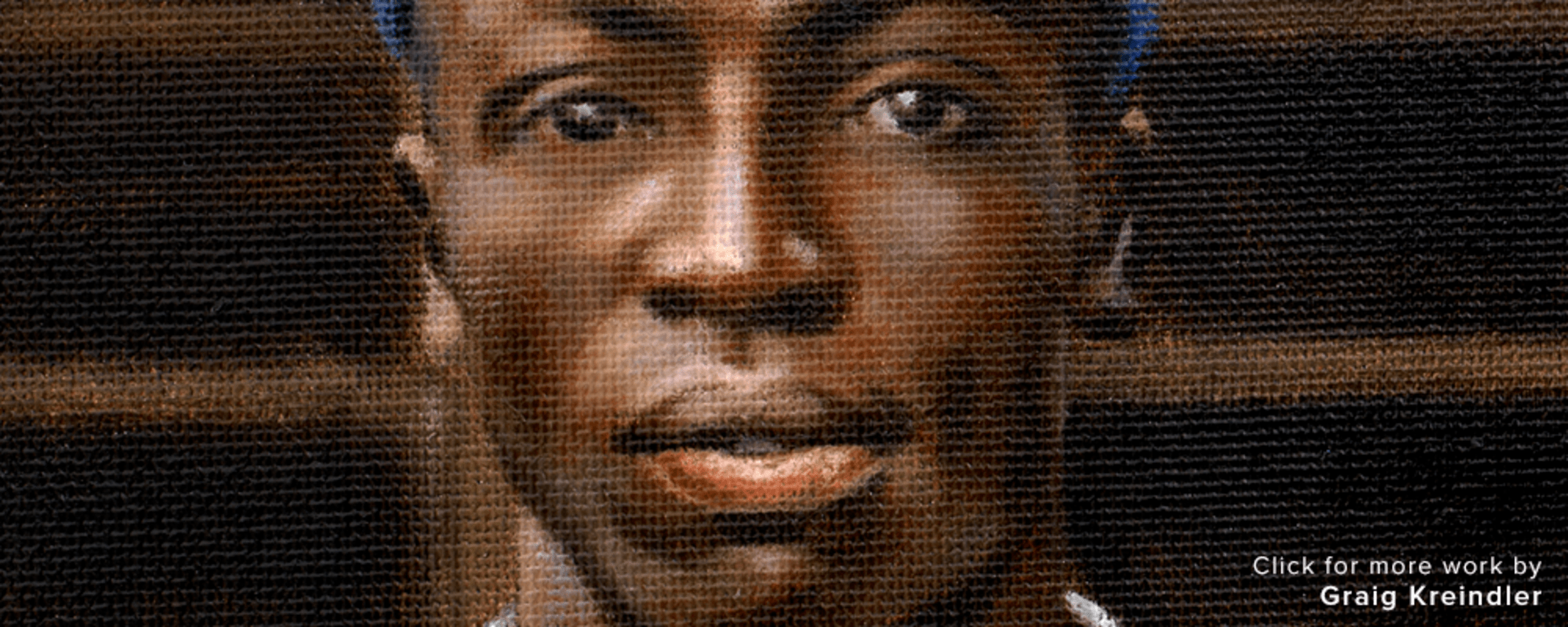


Records of Negro Leagues Baseball statistics are incomplete. The above was compiled using various sources including the Negro Leagues Database at seamheads.com after consultation with John Thorn, the Official Historian for MLB, and other Negro Leagues experts. In December 2020, MLB bestowed Major League status on seven professional Negro Leagues that operated from 1920-48. MLB and the Elias Sports Bureau are in the process of determining how this will affect official MLB records and statistics.
Faster Than Light
By: Manny Randhawa | @MannyOnMLB
¡°One time he hit a line drive right past my ear. I turned around and saw the ball hit him sliding into second.¡±
Satchel Paige was talking about James Thomas ¡°Cool Papa¡± Bell, one of the greatest players in Negro Leagues history, and by all accounts, the fastest. In fact, he may have been the fastest player in baseball history.
Bell played in the Negro Leagues from 1922-46, the year before Jackie Robinson broke the color barrier in Major League Baseball. Bell is legendary for his speed, taking two or even three bases on a bunt, beating out ground balls back to the mound, and registering as nothing more than a blur around the bases for 27 years. He played shallow in center field because he was able to go back and run down just about anything hit over his head that stayed in the ballpark.
Not only that, Bell played all year round, also playing 21 seasons of winter ball in Cuba, Mexico and California.
Here are some key points to know about Bell, who was inducted into the National Baseball Hall of Fame in 1974.
? Bell was born in Starkville, Miss., on May 17,1903. He moved to St. Louis to be with family at age 17, and shortly thereafter began his baseball career with the Compton Hill (St. Louis) Cubs. He joined the St. Louis Stars of the Negro National League two years later, and garnered his nickname as a pitcher. With an arsenal featuring curveballs, knuckleballs and screwballs that he could throw from three different release points, Bell was simply calm and cool out on the mound even amid stressful situations.
One in particular stands out, in which he struck out Oscar Charleston, considered the greatest hitter in Negro Leagues history, to escape a jam. His manager at the time, Bill Gatewood, came up with the moniker, adding ¡°Papa¡± perhaps because of how Bell handled himself like a veteran out on the mound even as a teenager.
Cool Papa Bell - Faster Than Light, produced by Matthew Leib | matthewleib.com
? Following an injury to his pitching arm, Bell moved to center field in 1924, a position well-suited for him with his great speed. He played for the Stars until the club folded in 1931, winning championships in '28, '30 and '31. He played the next season split between the Detroit Wolves, Homestead Grays and Kansas City Monarchs. He then joined the star-studded Pittsburgh Crawfords in '33 and played alongside legends Josh Gibson and Paige. In '43, he returned to the Grays and won two Negro Leagues World Series titles in '43 and '44. In 1929 and '32, he also had brief stints with the Chicago American Giants.
? At some point in his career, Bell learned to switch-hit, originally listed as a right-handed batter but later hitting from the left side, which meant he¡¯d only be faster to first base by being closer to the bag out of the left-hand batter¡¯s box.
Among many legendary accounts, he once stole 175 bases in a 200-game season and was able to round the bases in 12 seconds flat. Even the ¡°fastest man in the world¡± in the 1930s, Jesse Owens, refused to race Bell.
¡°If he bunts and it bounces twice, put it in your back pocket,¡± legendary catcher Ted ¡°Double Duty¡± Radcliffe told author James Riley.

Negro Leagues statistics are incomplete, but according to SeamHeads.com, Bell played in 1,468 recorded games, hitting .331/.400/.461 (128 OPS+) with 330 stolen bases. He also hit .391 in exhibitions against all-white teams through the years.
? Bell retired from professional baseball at age 47 in 1950, playing out the remainder of his career for the Kansas City Stars, a farm club of the Kansas City Monarchs. He became a scout for MLB¡¯s St. Louis Browns for four years until the club moved to Baltimore, and then worked as a custodian and night security officer at the St. Louis City Hall until 1970. Four years later, he became the fifth Negro Leagues player elected to the National Baseball Hall of Fame. He died on March 7, 1991.






